Nothing Phone (3a) review: not just the bare essentials
The direct successor to Nothing's best-selling phone to date loses out on the Pro's telephoto camera – but does try something new with the Essential Key
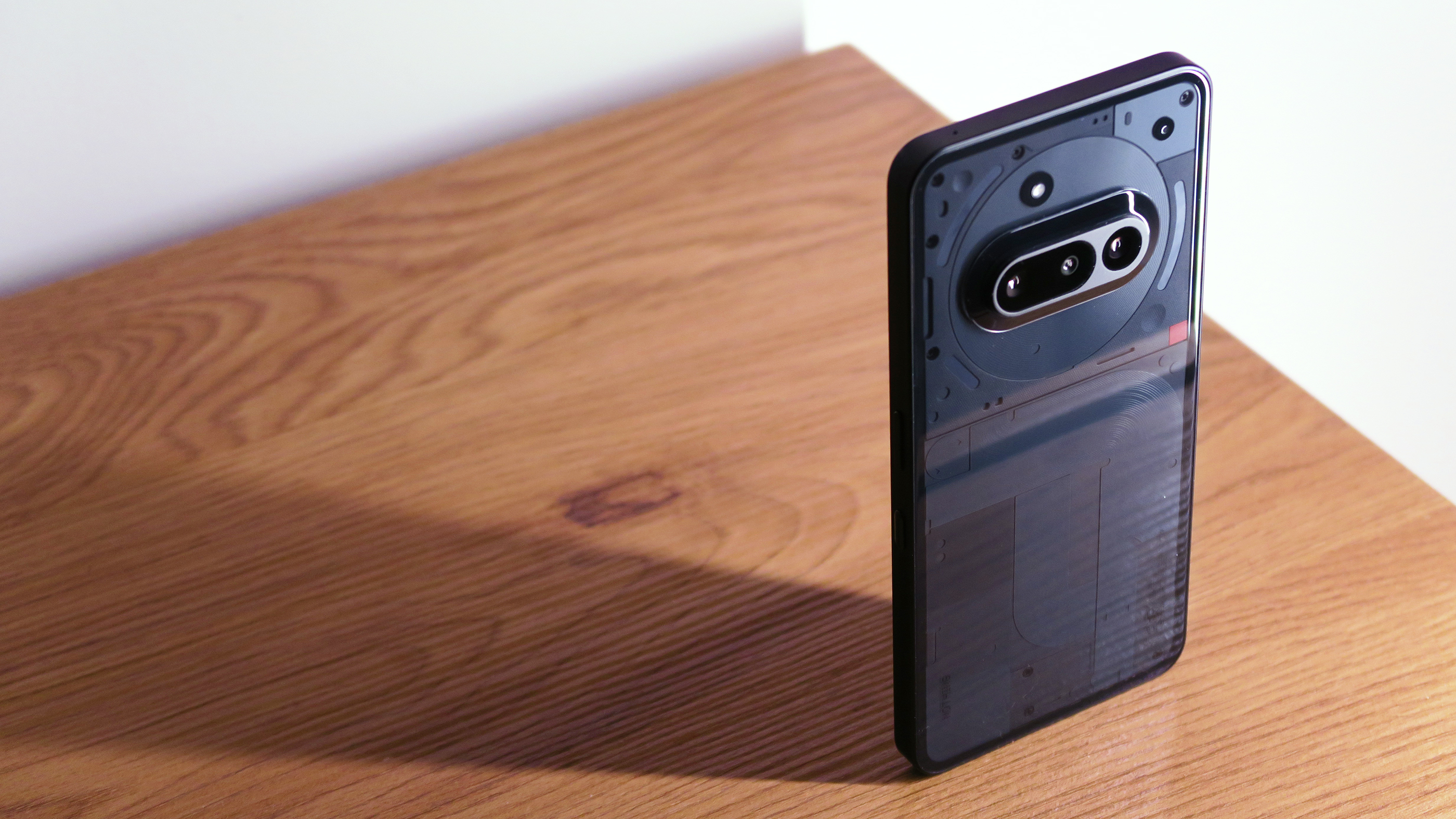
Even though the base Phone (3a) misses out on its Pro-branded sibling's more accomplished camera, it still takes good photos and otherwise serves up Nothing's unique high-quality smartphone experience at a compelling price. The headline upgrade – Essential Space – is a smart example of AI integration in theory, but in practice it needs a fair bit of refinement to be truly 'essential'. Nonetheless, the Nothing Phone (3a) is a standout entry in its class.
-
+
Great user experience in Nothing OS
-
+
Unique Glyph Lighting and software features
-
+
Solid battery life and fast charging
-
-
Essential Space needs more work
-
-
Some minor stutters in performance
-
-
2x telephoto doesn't add much to experience
Why you can trust T3

The Nothing Phone (2a) was a compelling entry that married Nothing's distinct aesthetic to a feature set and price point that few others could match. And now, a year on, we have the follow-up to this record-breaking mid-ranger – the Phone (3a), which I've been living with for this review.
Unlike the (2a) series, which was expanded from a single entry to multiple variants – including the more powerful Nothing Phone (2a) Plus later on in 2024 – this year, we get a duo of phones straight out of the gate: the base Phone (3a) and the Phone (3a) Pro too.
The good news for those wondering which (3a) to spend cash on is that, aside from slightly superior camera hardware and a tweaked design, there's little else in the Pro-model's quiver that isn't part of the base Phone (3a) experience too. Not to mention, its lower price point means it has real potential as one of this year's best affordable phones – it's surprised me beyond, say, a budget Samsung Galaxy.
You get the latest iteration of the often-lauded Nothing OS (running atop Android 15), which works in concert with the brand's unique flair for hardware to create an understated and premium all-round experience.
Defining traits, like Glyph Lights – think of these as a supercharged LED notification system – are now joined by the new Essential Key, which unlocks an AI-enhanced scrapbook of sorts, called Essential Space. But does that make Nothing's affordable entry-level model actually essential...?
How much does the Nothing Phone (3a) cost?
Nothing unveiled the Phone (3a) and (3a) Pro at the start of March 2025, with the Phone (3a) going on sale 11th of the same month, followed by the (3a) Pro on the 25th.
In Nothing's homeland of the UK, the Phone (3a) starts at £10 more than the previous Phone (2a) cost at launch, for the same amount of base RAM and storage (8GB / 128GB); coming in at £329, while the 12GB RAM / 256GB variant costs £379. For those looking to pick up the Phone (3a) on contract, both storage capacities are available on EE too.
Meanwhile, interested parties in the US can expect to pay $379 for the sole 12GB RAM / 256GB variant being made available in the region, via Nothing's US Developer Program (put in place as Nothing's phones don't technically offer full compatibility on US carriers).
Australian pricing clocks in at AU$599 for the base storage model and AU$689 for the 256GB version.
If you decide you would rather pick up the (3a) Pro, it only comes in a single 256GB variant, priced at £449 / $459 / AU$849.
Nothing Phone (3a) Pro: What's New?
- Larger, brighter display at 6.77in (up from 6.7in) w/ 3000-nit peak (up from 1300nits)
- Additional 50MP 2x telephoto camera
- New 'Essential Key', plus Essential Space app
- Qualcomm Snapdragon 7s Gen 3 processor
- Improved dust ingress protection (IP64 certification, up from IP54)
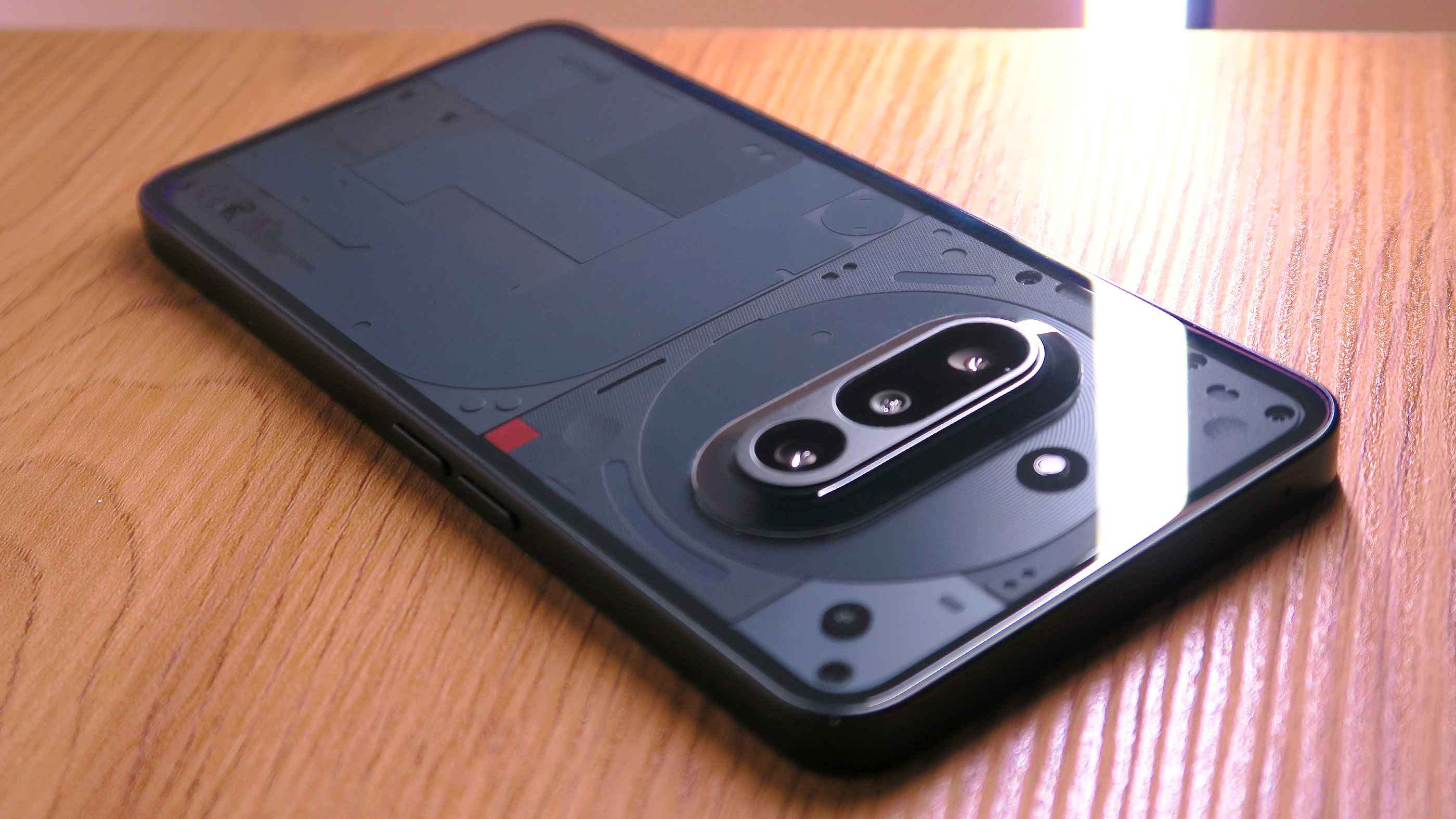
The Nothing Phone (3a) Pro stands apart as the brand's first 'Pro' model, toting a distinctly different camera design to anything we've seen from Nothing to date. By comparison, the base Nothing Phone (3a) I'm reviewing here feels far more familiar.
If you've seen the Nothing Phone (2a) or (2a) Plus, you've essentially seen the Phone (3a), with the most obvious visual difference being an additional lens as part of its main camera array.
If you're curious about the deeper distinctions between the Nothing's two latest entries, check out T3's dedicated Phone (3a) and the Phone (3a) Pro comparison feature.
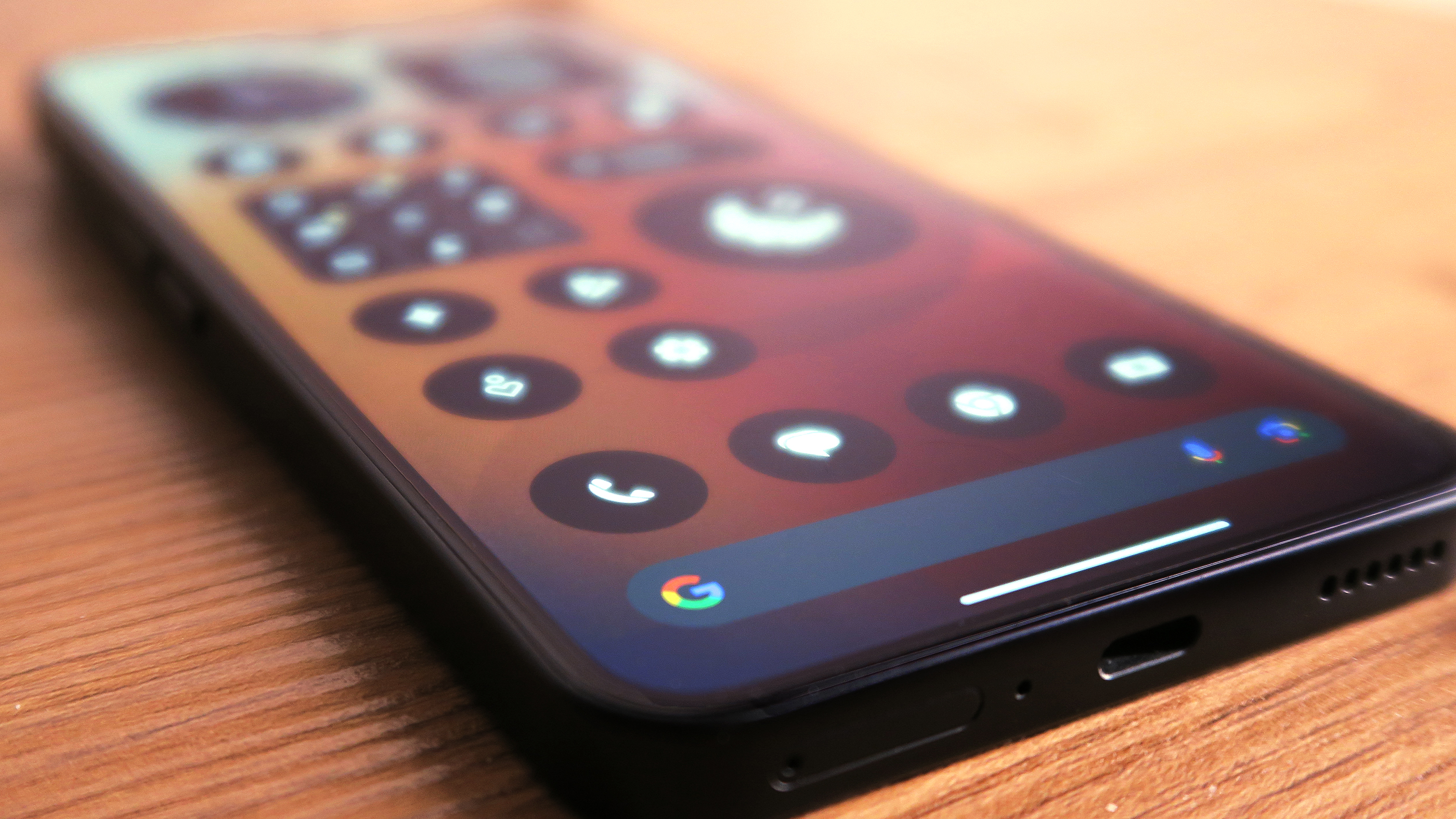
Switching from two to three rear cameras does quell the obvious comparison to the 'Minions' that the Phone (2a) line often received, with the (3a)'s trio of lenses (the main and ultrawide contained within a 'pill' shape, next to the standalone 2x telephoto), more closely resembling the last few generations of Google's Pro phones; including the Pixel 9 Pro XL.
Even so, Nothing's iconic transparent back, visible components and Glyph lighting persist – with the same three-element LED arrangement (comprised of 26 zones) as on the Phone (2a) line.
The Phone (3a) also serves up what's probably the best-looking (and feeling) polycarbonate-bodied phone currently out there, with a clean and sturdy frame that did well during review to repel damage, while also ensuring the phone felt reassuringly solid.
The improved IP64-certified dust resistance is appreciated too, even if protection overall still lags behind the industry-favoured IP68 rating.
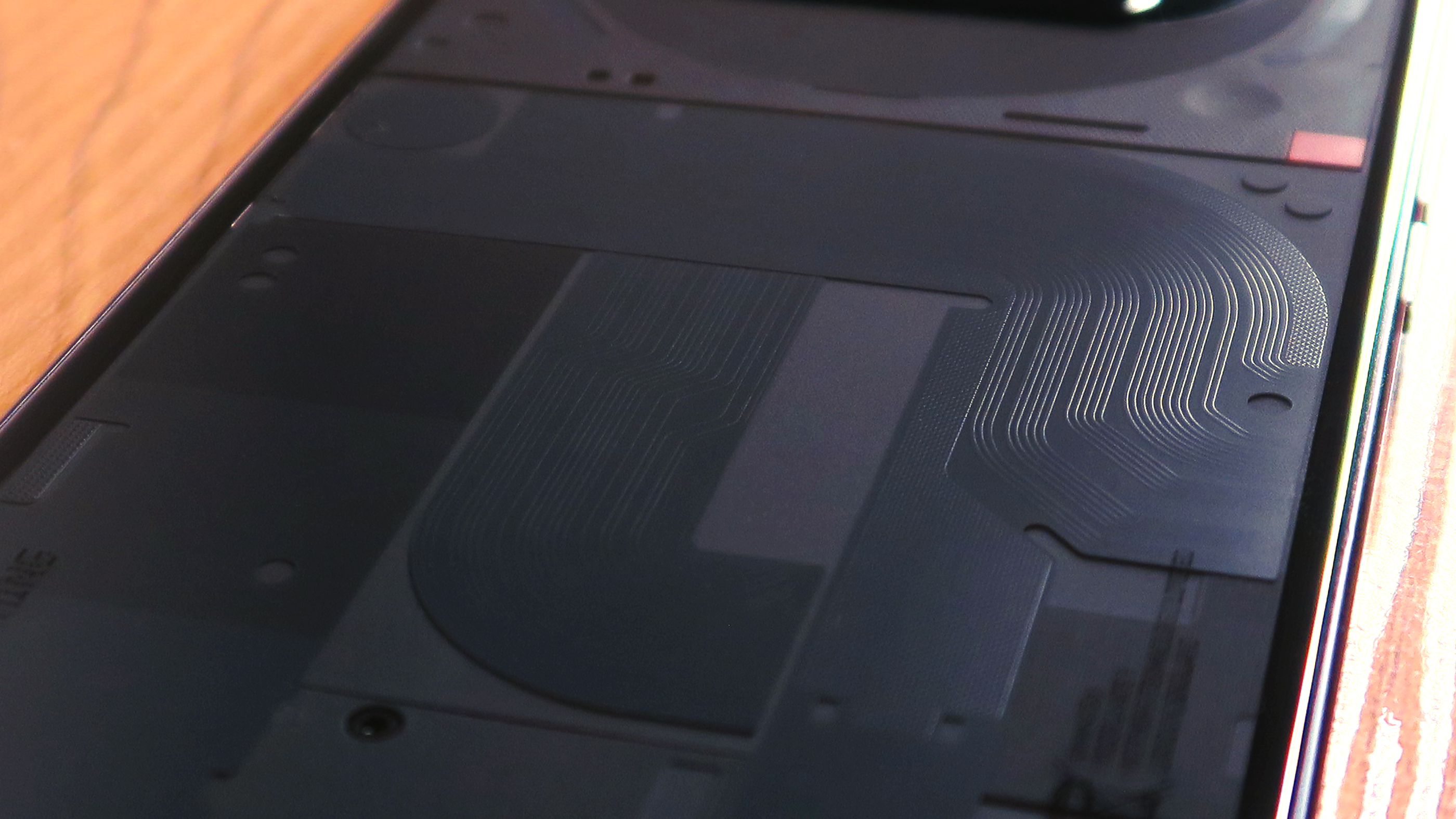
That plastic transparent back may also scratch more readily than the likes of the Nothing Phone (2)'s glass rear, but it's at least less likely to chip or shatter when dropped, for the more ham-fisted out there.
Nothing phones typically sport separate volume up and down controls on their left side and a power key on the right, however, the Phone (3a) series introduces an additional button, in the Essential Key.
This added physical control represents one of the biggest differentiators across the brand's latest phones. It grants access to a new AI-supported scrapbook of sorts, designed to house screenshots and voice notes.
While companies like Apple, Google and Samsung have made AI the main draw of their latest smartphones, however, Nothing is taking a more measured approach with additions like Essential Space.
How does Nothing's Essential Key work?
- Essential Key can be used to capture a combination of screenshots, voice notes and photos
- Essential Space creates task checklists automatically
- Essential Space allows for Collections to group items
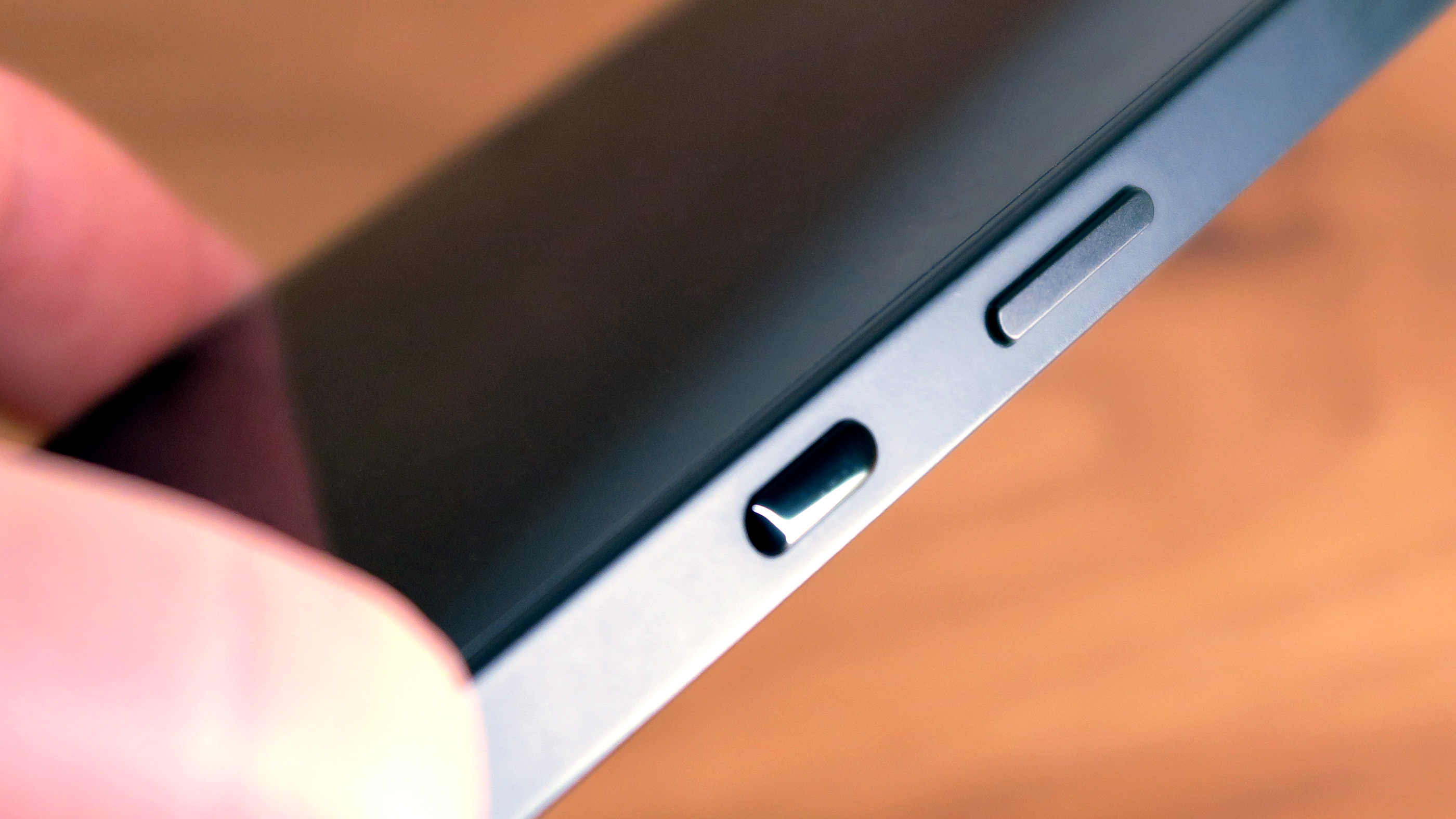
Up top, Nothing has been keen to highlight that – for the time being – Essential Space is still in beta. With this in mind, while there are some good ideas and smart technologies at work, the overall experience feels undercooked, and thus shouldn't be the driving force behind picking up either of Nothing's latest phones.
One issue with the experience that can't be fixed is the physical location of the Essential Key. Although Nothing has made a point of distinguishing it from the power key underneath which it sits (the Essential Key is glossy and domed, while the power key is flat and matte), as noted in our Phone (3a) Pro review, their proximity means you're going to press one when you meant the other... a lot!
As for Essential Space, while it's bare bones at launch, Nothing has already started making enhancements (adding capture from within the native camera app), which gives me hope that it'll continue to improve in scope and ability – and rapidly.
Long-pressing the Essential Key from the lock or home screen lets you record a voice memo, while doing so in an app, like a web browser, attaches said memo to a screenshot of whatever you're looking at.
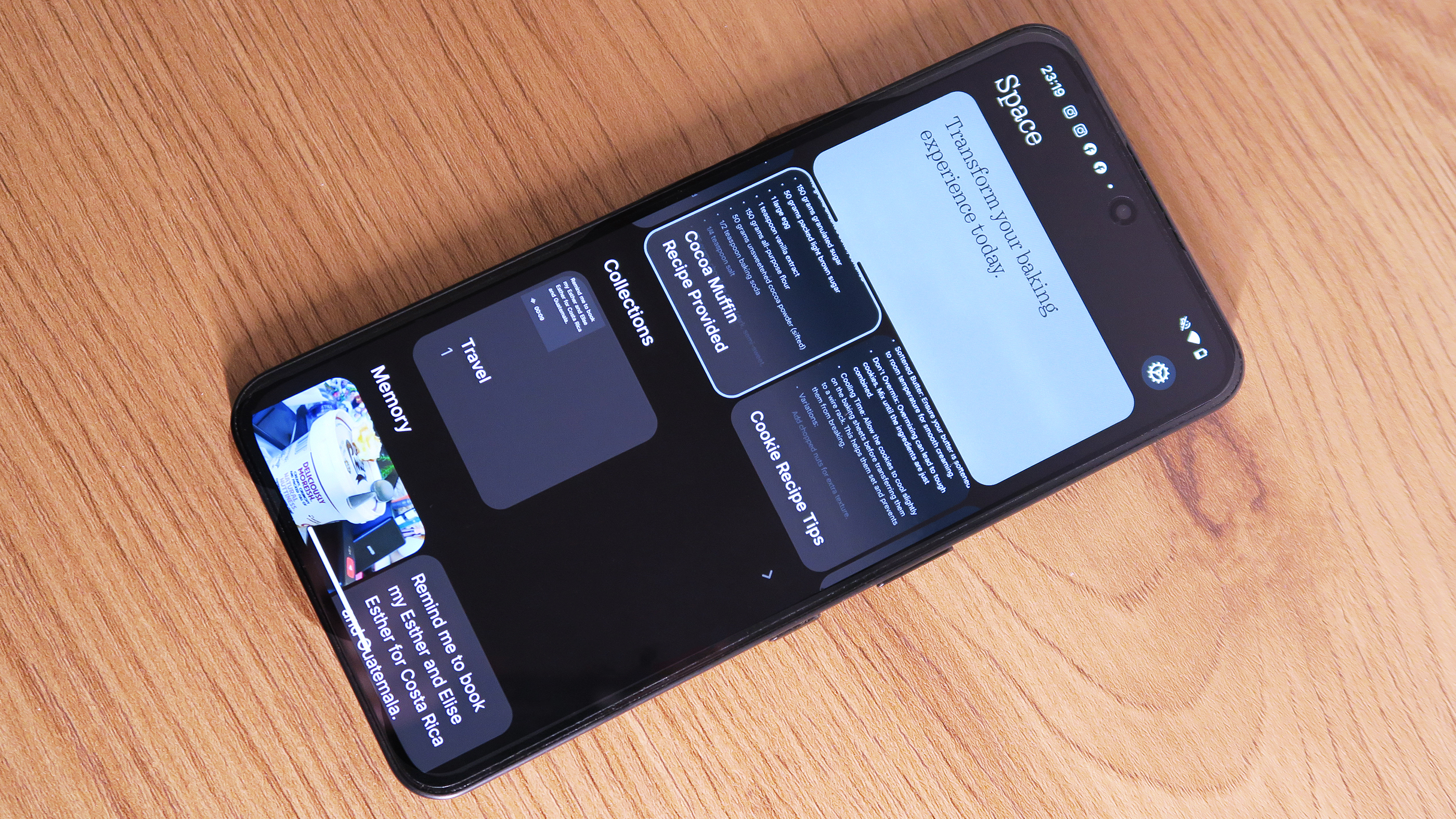
After a little processing time, Essential Space extracts information from captured imagery or audio, generating lists or highlighting key information – such as travel times from a ticket or to-do lists from a recipe. You also have the ability to group captured content into Collections, for better organisation too.
Although Nothing doesn't advertise which models the AI within Essential Space is powered by, the machine vision component can be impressively accurate, when it comes to discerning different subjects in a scene.
You can see what Nothing is aiming for here, but it's also clear where the company needs to take Essential Space to truly make it an essential part of the phone's user experience.
At present, it's a self-contained app, which is to say there's no interconnectivity with other first- or third-party apps, or any other aspect of Nothing OS. Adding Samsung-like Cross App Actions, as found on the latest Galaxy S25 series, would be a step in the right direction.
More modest refinements that I'd like to see that would elevate Essential Space include the ability to long-press and select multiple captures from the main app screen, in order to add to a Collection or delete in bulk. The ability to swipe from one capture to the next, without having to back out of a specific voice memo or screenshot first, would improve usability greatly – as would the ability to correct typos or misunderstandings from speech-to-text captures. Get on it, Nothing!
Is the Nothing Phone (3a) powerful enough?
- Glyph Interface: 3 LED segments with 26 individually addressable zones
- 6.77-inch OLED display, 1080 x 2412 pixels, 120Hz, 3000-nit peak
- 5000mAh battery capacity w/ 50W wired charging


As with the Phone (2a) series, the Phone (3a) and Pro both sport the same three-element Glyph Interface, rather than the more robust 11-element setup found on the brand's current flagship Phone (2).
This LED arrangement surrounding the rear cameras flashes in an array of patterns that vary depending on whether you're getting an incoming call or notification, playing music, have a timer running, changing device volume, and it even doubles as a soft fill light when recording video.
Nothing has also implemented support for third-party actions, such as using the Glyph lights as a countdown for your incoming Uber. However, the company doesn't appear to have worked to expand on this particular feature since its debut, making me wonder how many people really dig into the Glyph Interface experience.
Even so, it's undeniably unique and adds to the Phone (3a) distinct look and feel, while also extending functionality.
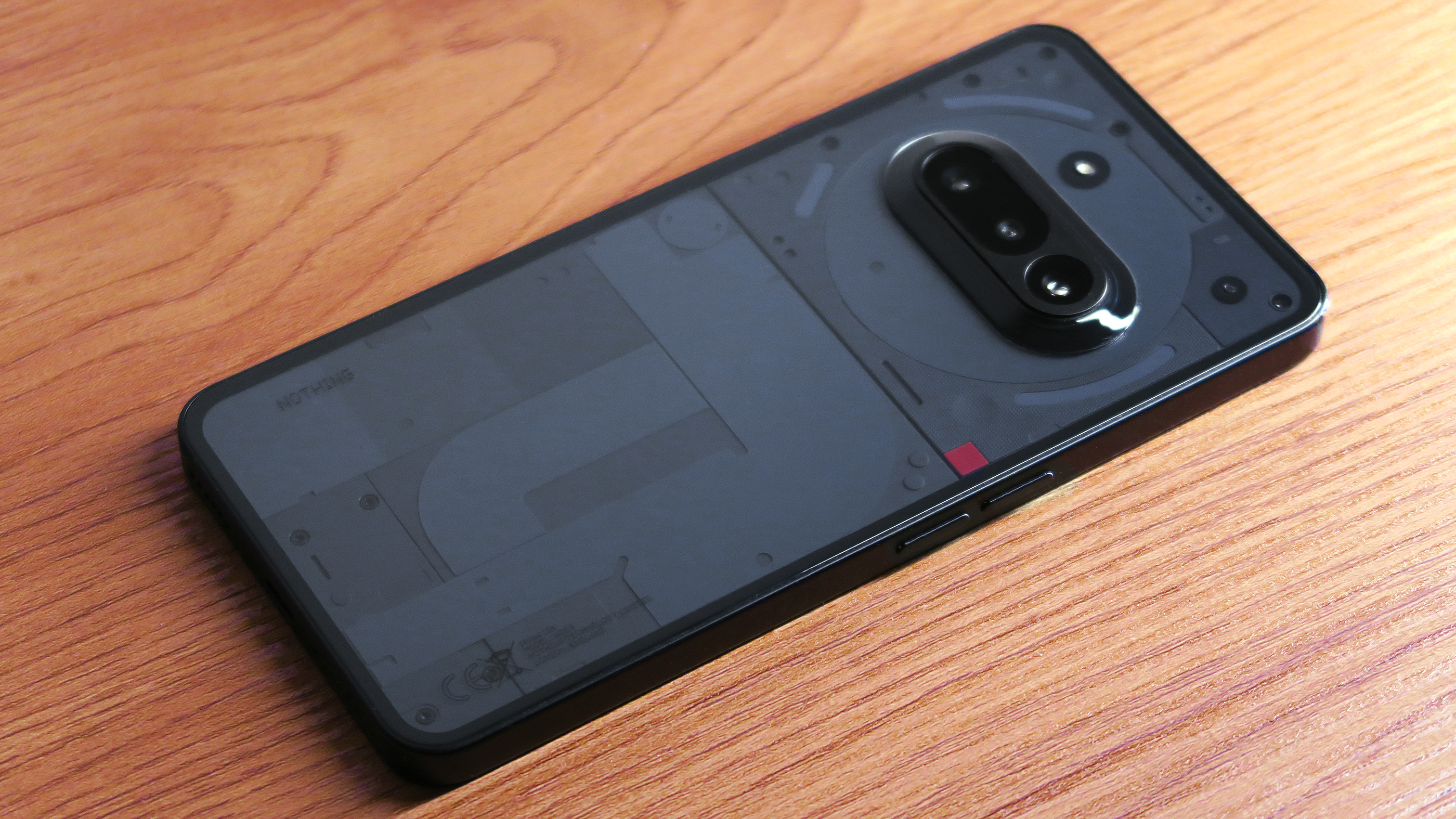
One of the other most distinct aspects of Nothing's phones is their user experience: Nothing OS. Its monochromatic home screen app icons and widgets serve up a clean look with a distinct dot-matrix aesthetic, with an air of 70s to 80s retro-futurism.
It helps Nothing's phones stand apart from the scores of other Android phones out there – and every update and addition appears to have been informed by user feedback from the brand's active community; something I think bigger phone-makers should take note of.
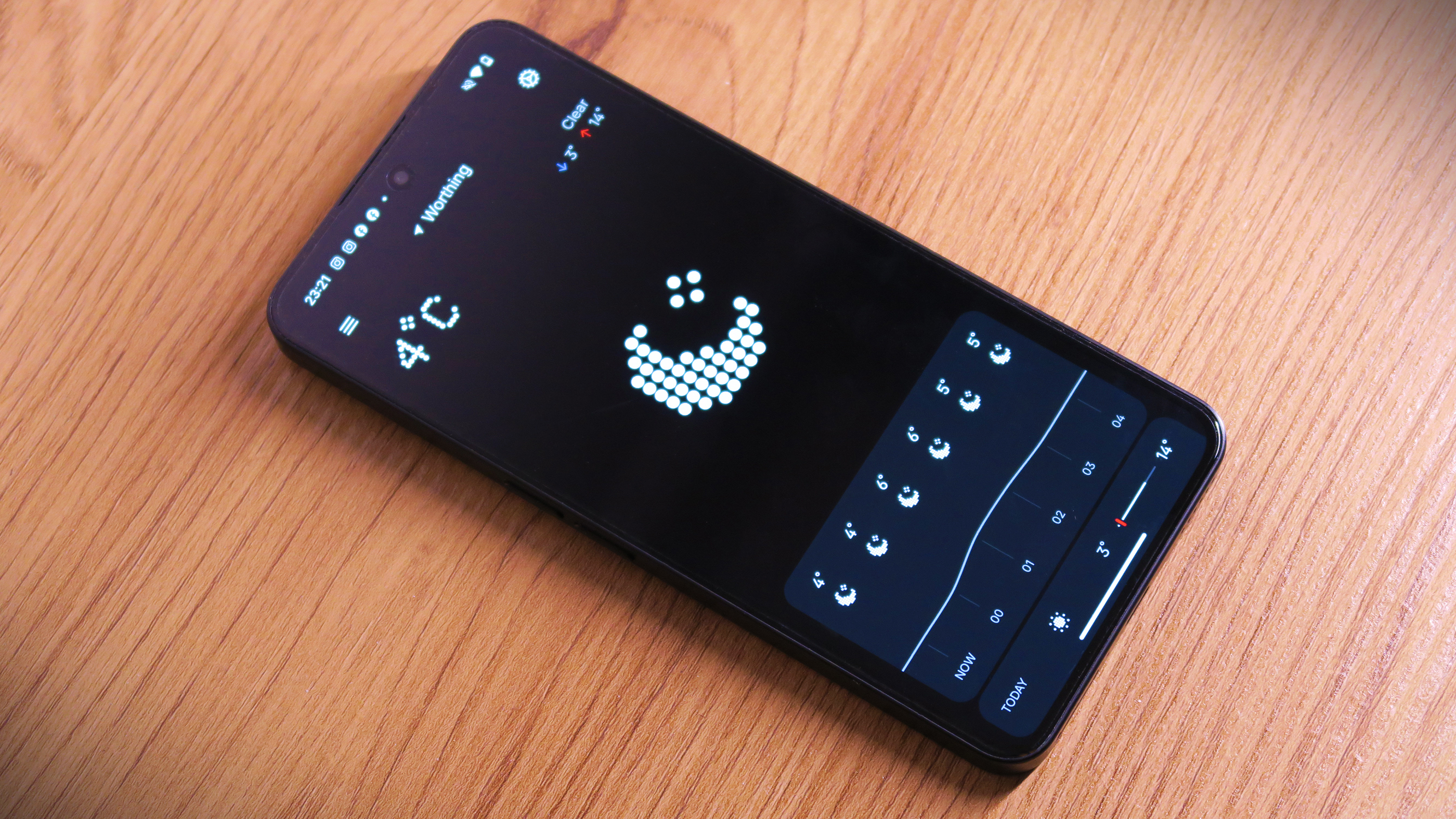
While three years of OS updates and four years of security updates isn't awful (the phone arrives on Android 15 at launch), it does means Nothing's mid-rangers are now lagging behind rivals, such as the recent Samsung Galaxy A56, which comes with six years of each.
From a usability standpoint, the move to a larger, brighter 6.77-inch 120Hz OLED panel is nothing but good news. The screen boasts better outdoor visibility and brightness, as well as looking and feeling as good as any premium smartphone screen, thanks to Nothing's commitment to a flat front and uniform bezels.
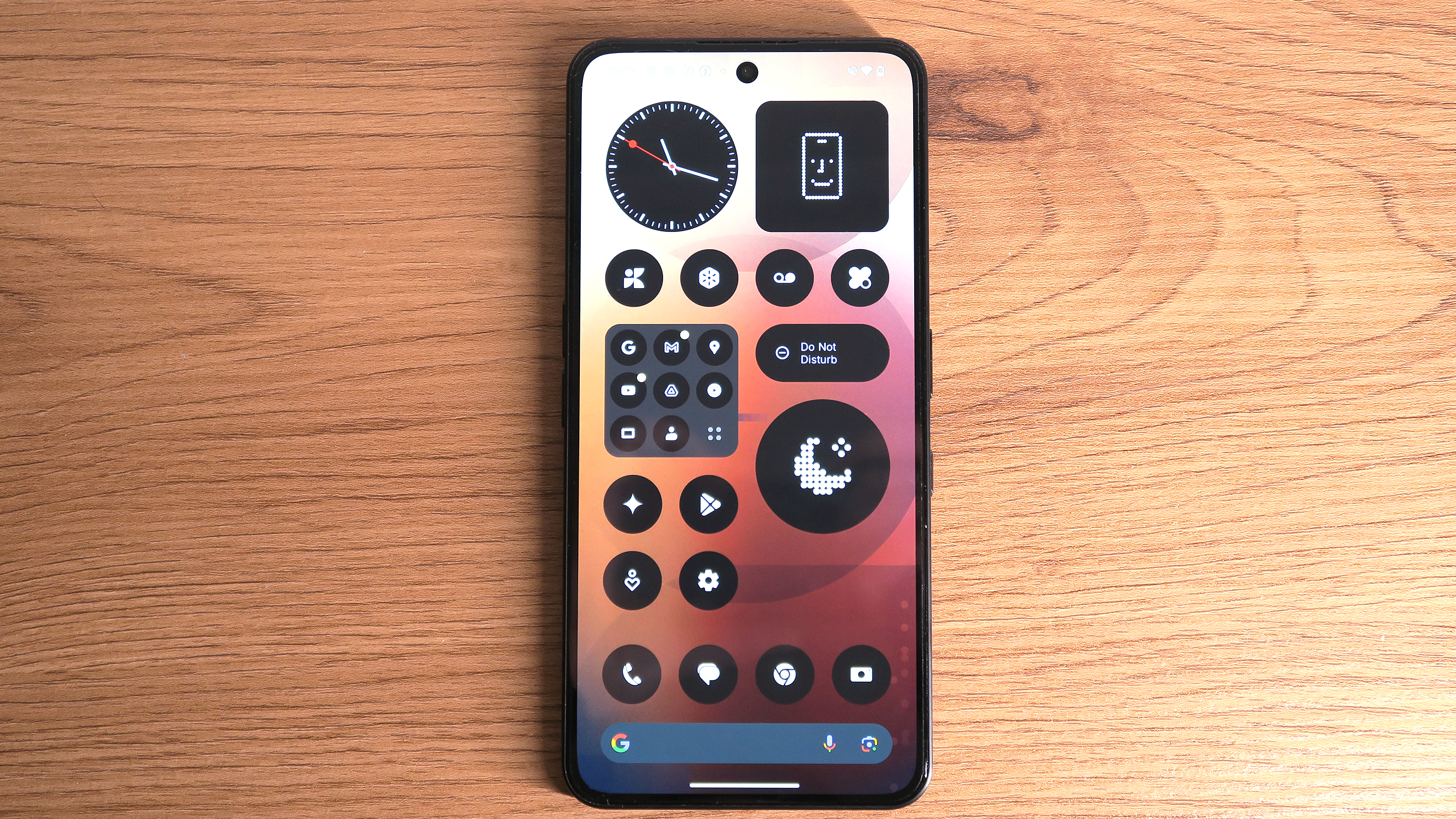
While chipmaker MediaTek has found favour with bigger brands and higher-profile smartphones in recent years, Nothing made of point of highlighting the switch back to a Qualcomm chipset for the Phone (3a) line; with both running on a Snapdragon 7s Gen 3, paired to 8 or 12GB of RAM (depending on the market).
In day-to-day use, you're unlikely to find fault with the experience this hardware is able to muster, particularly at the Phone (3a)'s price point. That said, I did run into the occasional stutter, longer-than-expected app load time, and some eyebrow-raising shutter lag when using the phone's camera. I just hope Nothing can smooth these bumps out with subsequent software updates.
It also came to light that the (3a) series relies on slower and less power-efficient UFS 2.2 storage, compared to rivals in the same bracket that have opted for more advanced UFS 3.1 storage. Even so, Nothing posted a dedicated blog post detailing the decision, which seems to amount to a case of diminishing returns and that UFS 2.2 is fit for purpose, in the context of the Phone (3a)'s wider internal hardware.
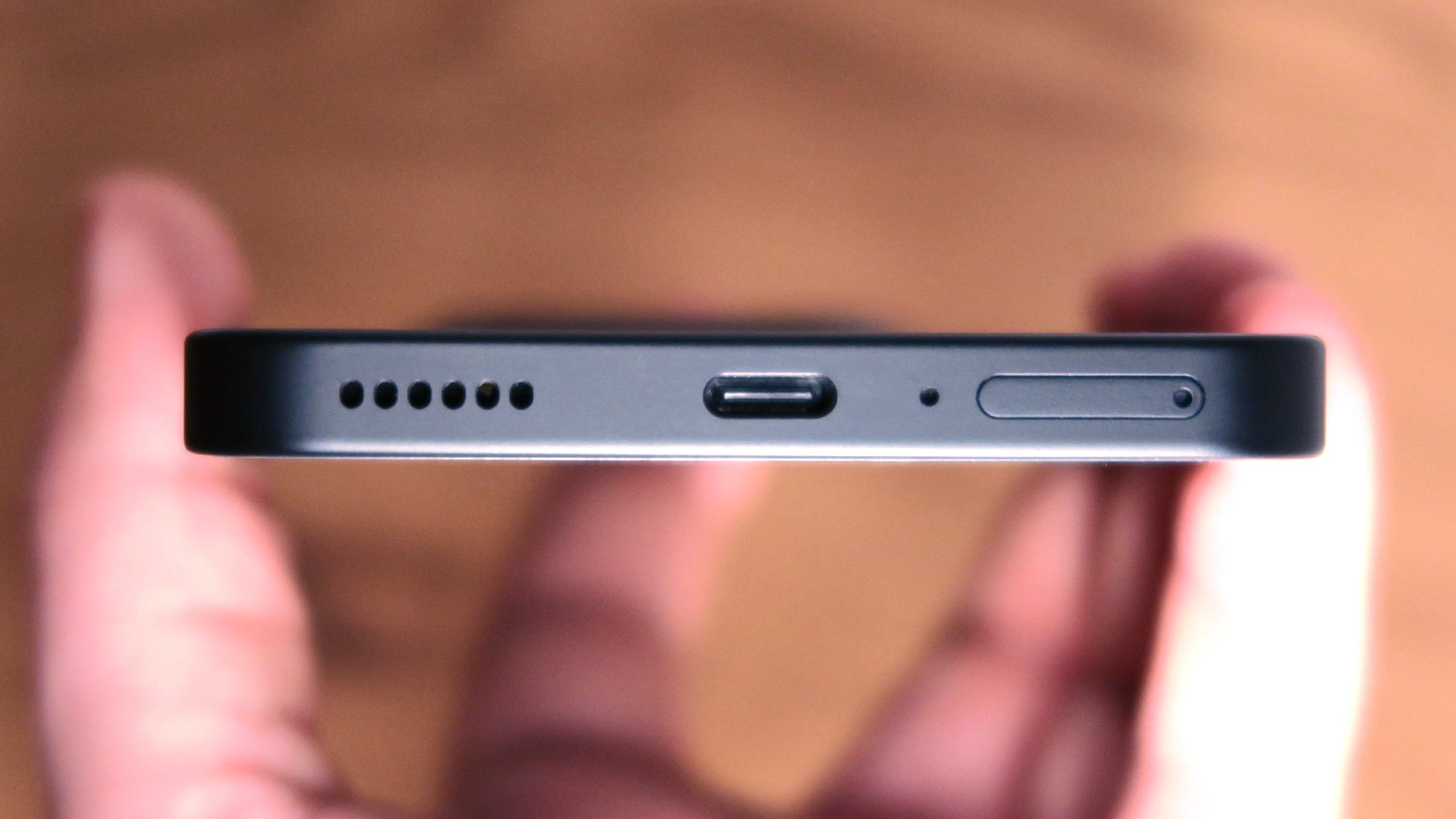
While performance is expectedly mid-range, battery performance is top-notch, with the phone's sizeable 5,000mAh cell delivering over 10 hours of screen-on time per charge, which in my usage equated to about two full days of use before needing a refill.
Nothing's fastest wired charging speeds – introduced on the Phone (2a) Plus – carry over here too, provided you can find a compatible power adapter (as Nothing doesn't include one in the box). At a peak 50W (more than double what fresh-faced rival the Google Pixel 9a offers), I was able to refill my Phone (3a) in exactly an hour, with the battery reaching 71% charge, in the first 30 minutes.
Are the Nothing Phone (3a) cameras any good?
- Main: 50MP Samsung ISOCELL GN9, f1/.9 aperture w/ OIS (optical stabilisation)+ EIS (electronic image stabilisation)
- 2x periscope: 50MP Samsung ISOCELL JN5, f/2.0 w/ EIS
- Ultrawide: 8MP Sony IMX355, f/2.2, 120°
- Front: 32MP Samsung ISOCELL KD1, f/2.2
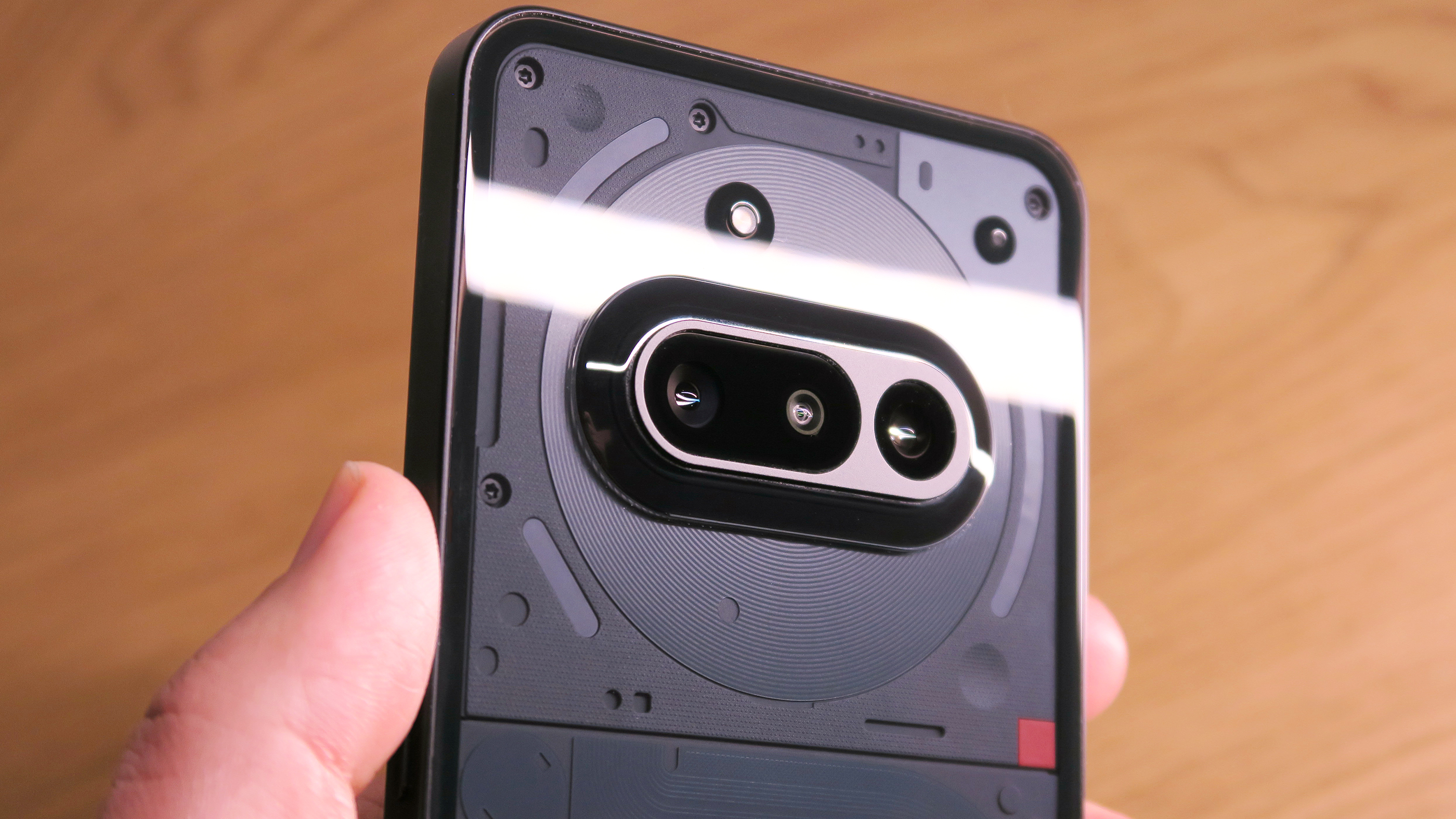
The obvious difference between the back of the Nothing Phone (3a) and Phone (3a) Pro isn't just cosmetic, it's the result of the distinctly different camera hardware.
The base Phone (3a) doesn't swing from the Pro model's 3x periscopic zoom lens, instead adopting a more modest 50-megapixel 2x telephoto. It also uses a slightly lesser 50MP main sensor, and a lower resolution 32MP selfie snapper. Both share the same 12MP ultrawide sensor, though.
Even with the narrower focal range, the Phone (3a)'s telephoto still allows for 4x lossless sensor crop zoom, which is the only reason I can think of as to why they didn't just stick with a dual rear sensor setup – like the Phone (2a) line – and simply crop on the main sensor.
While I wouldn't go to Nothing when recommending camera phones, the company's TrueLens Engine 3.0 image processing pipeline, paired with the (3a)'s photographic hardware, can produce some really nice shots.
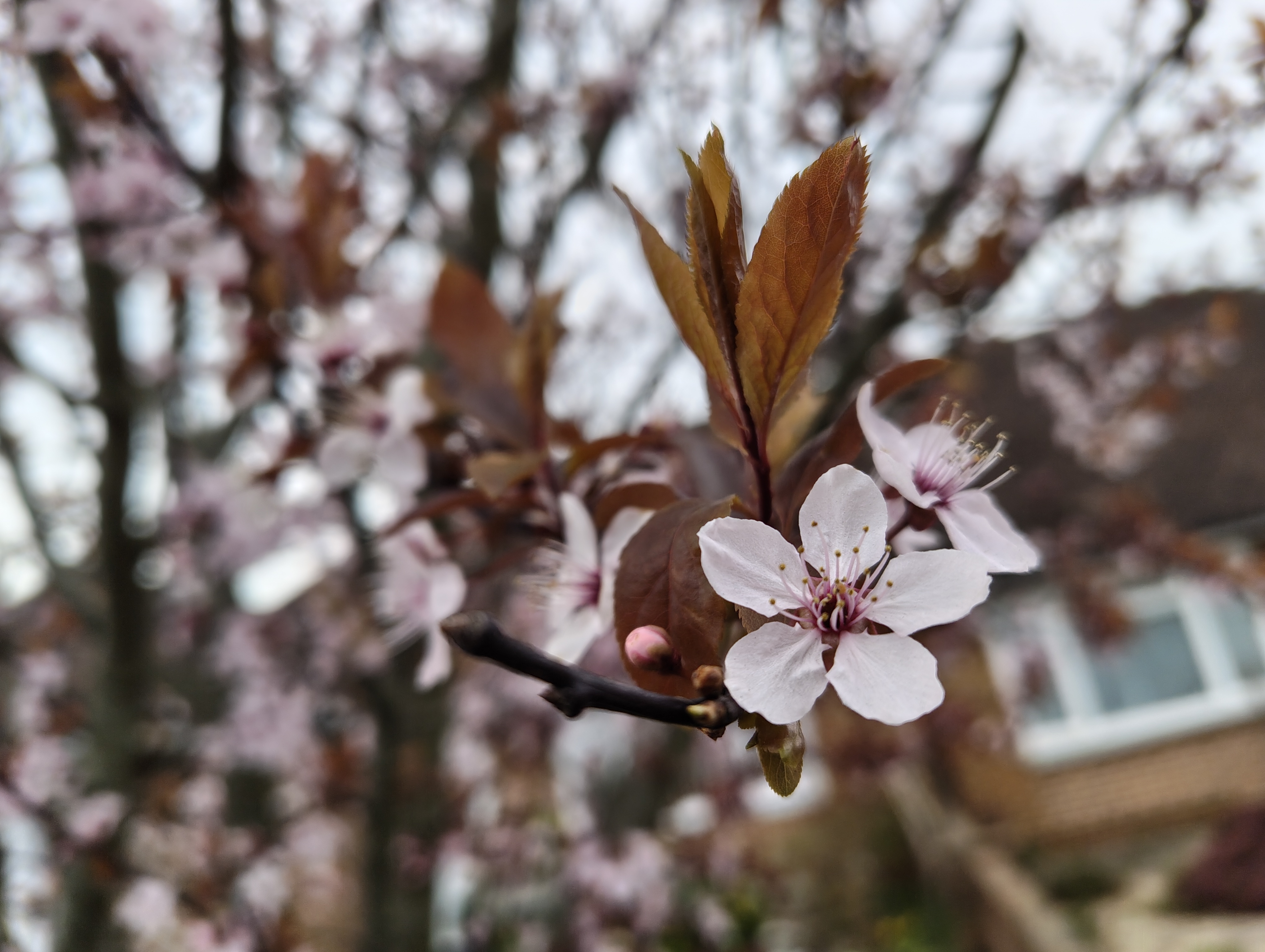







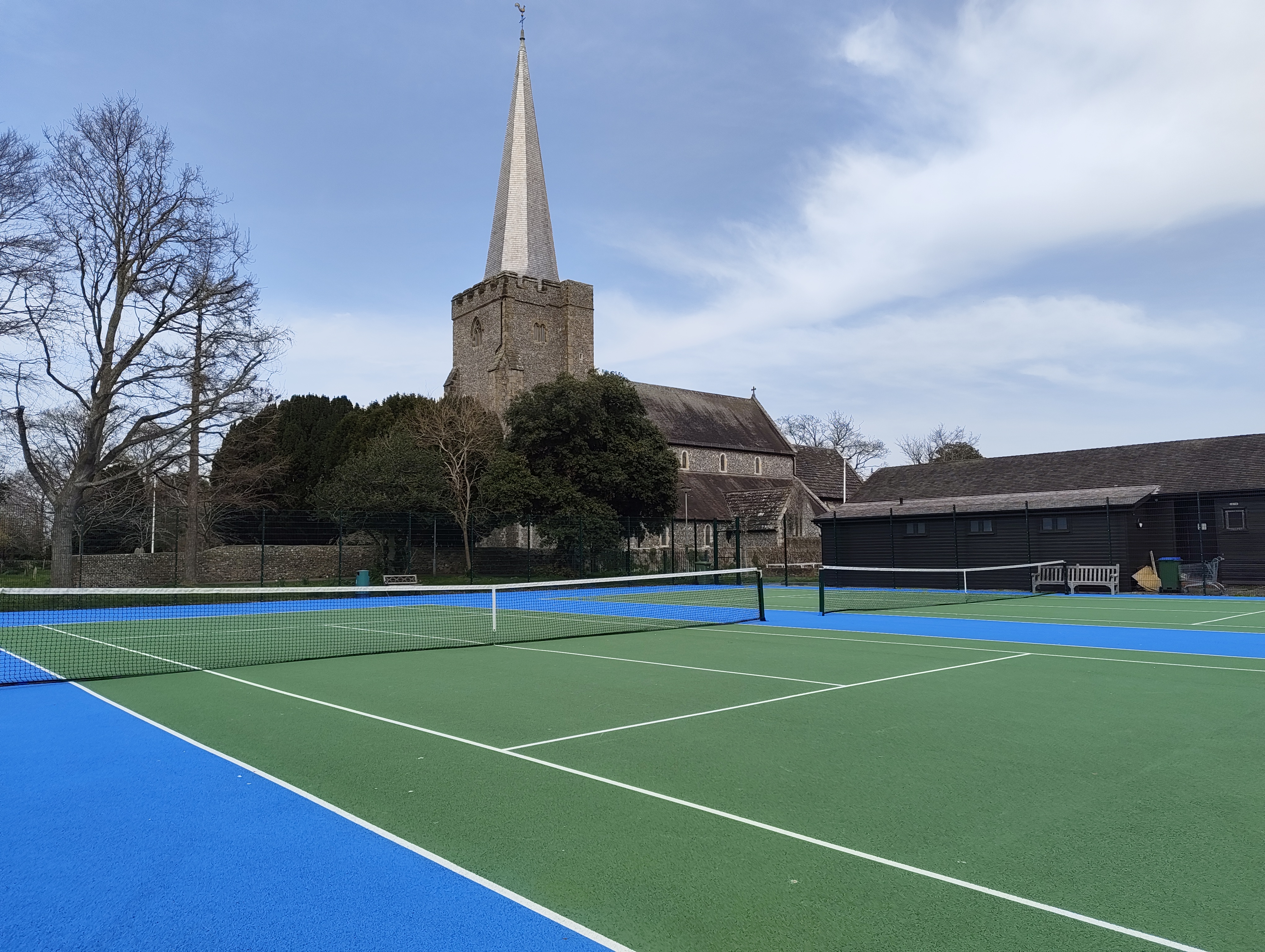



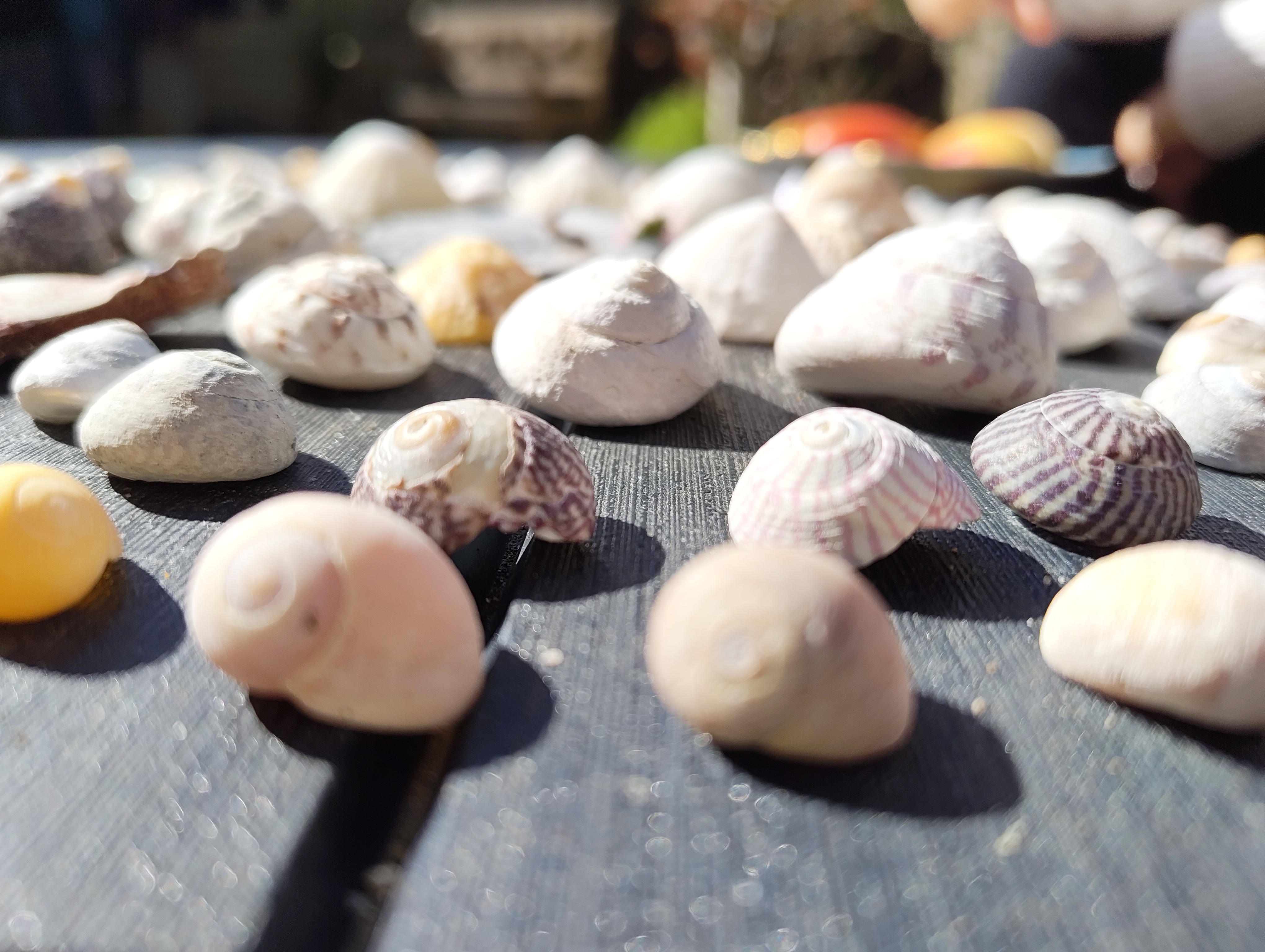




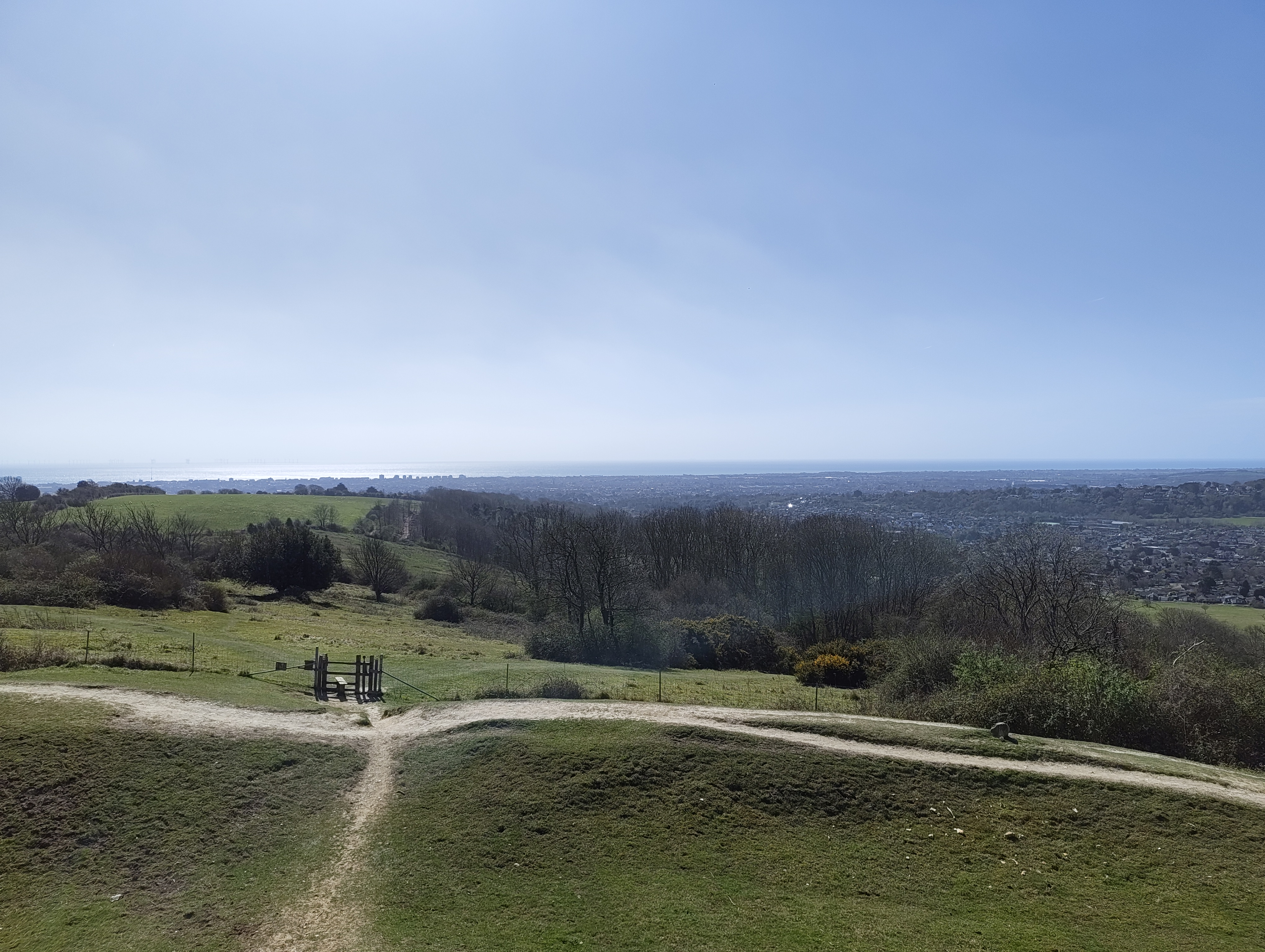

In good lighting, images serve up impressive colour depth and accuracy, good contrast and decent centre-frame detail. As available light diminishes, grain (which is already visible in the darker areas of frame), becomes more prominent, as the phone works hard to try and brighten things up. But colour accuracy persists – a trait that even Apple's latest iPhones don't always get right.
When a scenario is just too high in contrast, the limits of the phone's dynamic range become apparent, with high contrast results that veer towards overexposure, whilst simultaneously crushing blacks in the darkest areas of frame.



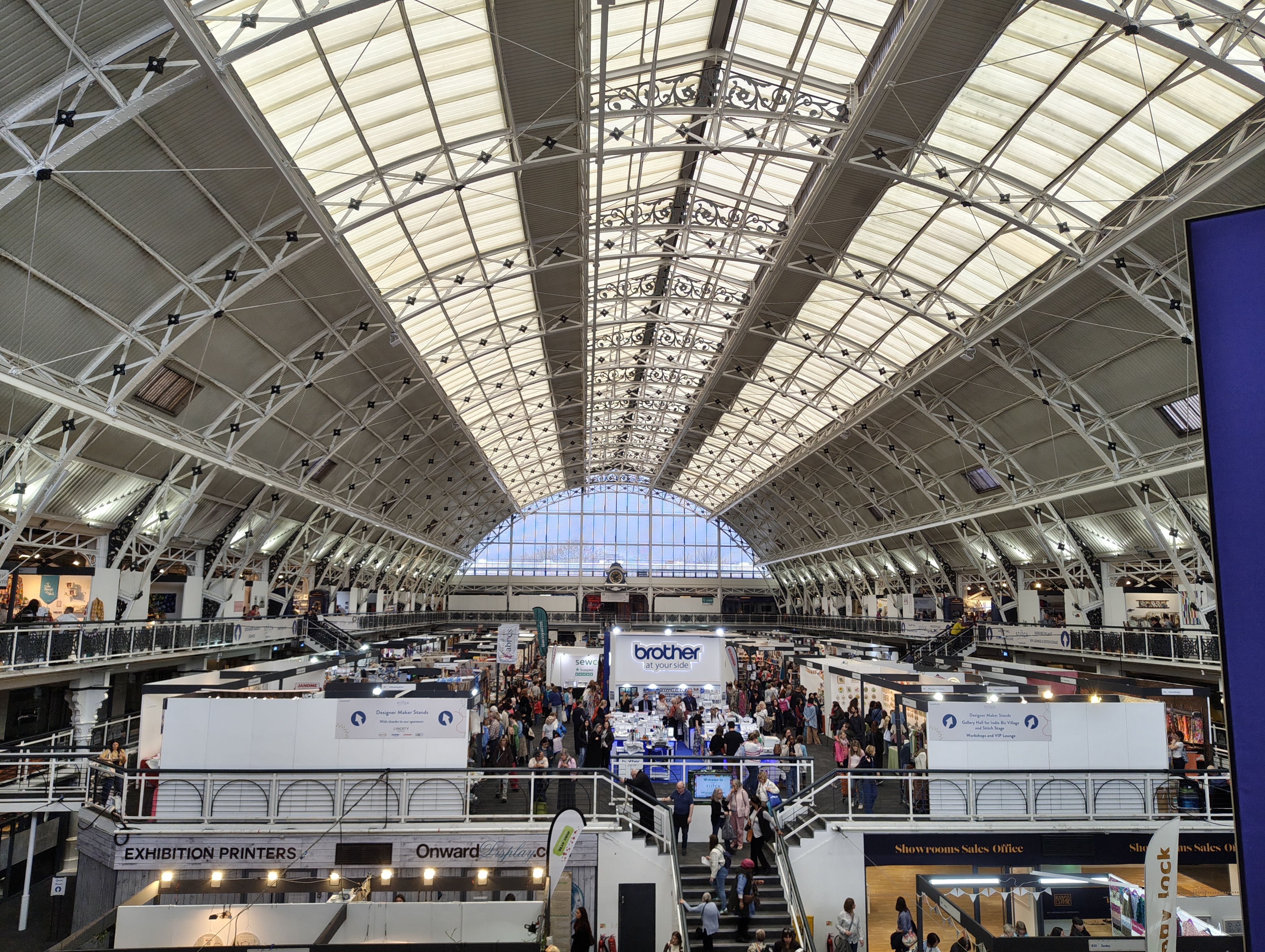



Portrait shots (which is where that 2x telephoto is meant to take point) come with convincing bokeh (background blur), although you are limited to virtual f-stop at capture and can't adjust this quality after the fact, on the likes of Apple's or Samsung's phones.
As for video, the peak 4K 30fps recording is a little desaturated, compared to still shots, with the stabilisation letting in a little wobble when walking. Meanwhile, unlike the (3a) Pro, that standard model's lower resolution front-facer is capped at Full HD video recording (in place of 4K on the Pro).
Nothing Phone (3a) review: Verdict
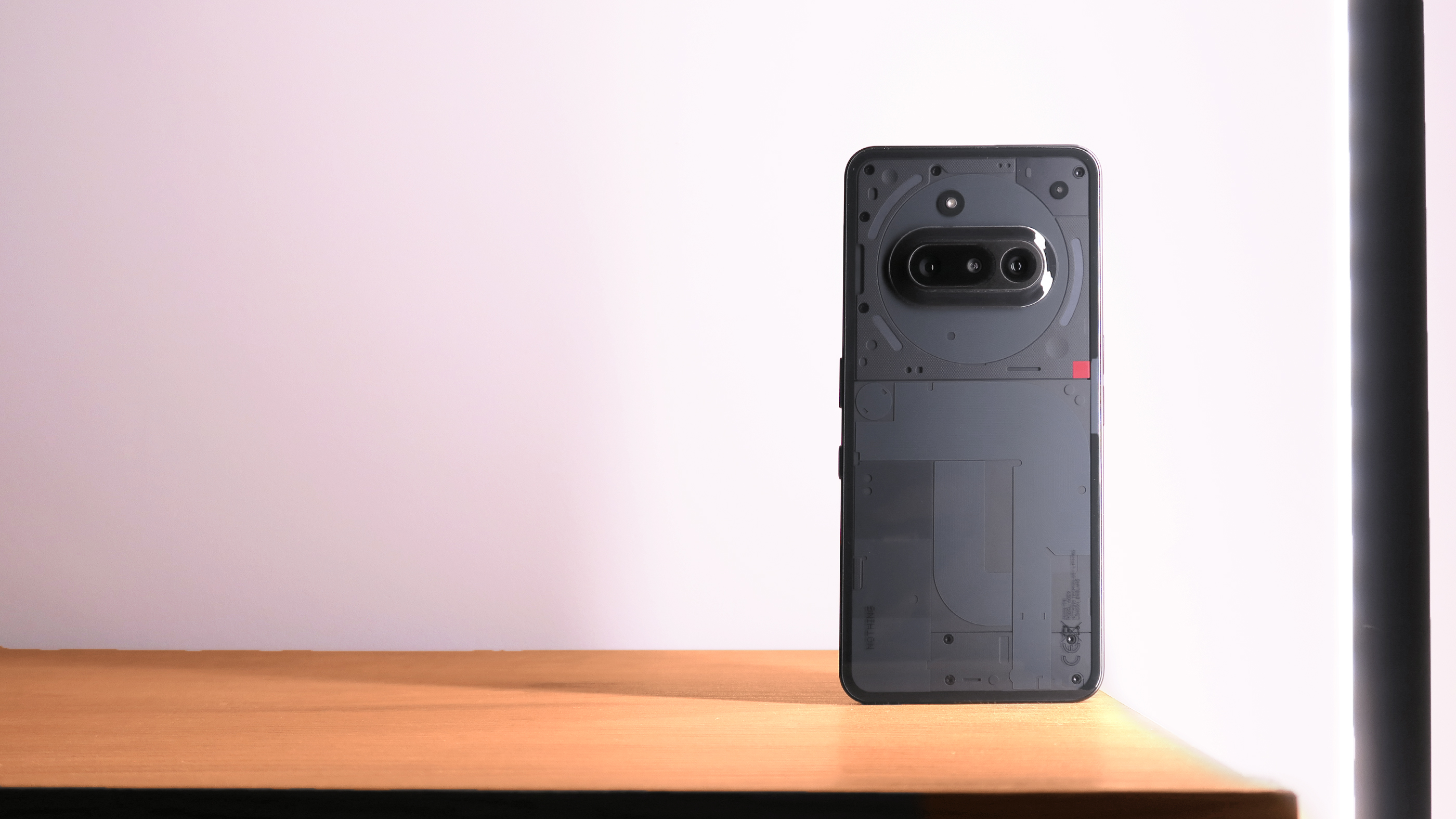
Sure, the Phone (3a) loses out on the Pro's supercharged camera experience, but the optics that Nothing gives you instead are still perfectly capable.
As with its predecessor, the (3a) is solid value, especially for those after a phone with some individuality in the mid-range space. And that's before you account for the Glyph Interface or the fact that the Nothing OS software doesn't just look good, it's a pleasure to use – being free from ads and bloatware that rivals often feature.
Performance meets expectations at this price point, but there are definitely areas where the company could tighten things up via software updates to grant the Phone (3a) a more responsive user experience. Battery life is a highlight, though, with solid longevity that, paired with the (3a)'s display, makes this a great media consumption device.
The most challenging aspect of the Phone (3a) series as a whole is that new headline feature: Essential Space. It's 'unfinished' in my book – Nothing says as much, as it's in beta – which means it's not the best reason to buy one for now, despite how it reads on paper.
Overall, the Nothing Phone (3a) is a great-looking affordable Android device – from both a build, visual and software perspective – that's a great pleasure to use, and a genuine alternative to the Samsung, Google and other obvious competition.
Also consider
Considering there's little besides the camera that sets the Phone (3a) and (3a) Pro apart, if that's not your highest priority, the base model gives you an otherwise identical experience for a decent chunk less (not to mention it comes in a head-turning blue).
I'd say the (3a) outclasses far pricier mid-rangers – like the Samsung Galaxy A56 – and even comes in cheaper than the aging Google Pixel 8a, let alone the forthcoming Pixel 9a.
With the iPhone 16e costing so much more, too, those after a similarly-priced iOS-powered rival will have to dip into the archives, to a depreciated iPhone 14.
Sign up to the T3 newsletter for smarter living straight to your inbox
Get all the latest news, reviews, deals and buying guides on gorgeous tech, home and active products from the T3 experts

You must confirm your public display name before commenting
Please logout and then login again, you will then be prompted to enter your display name.
-
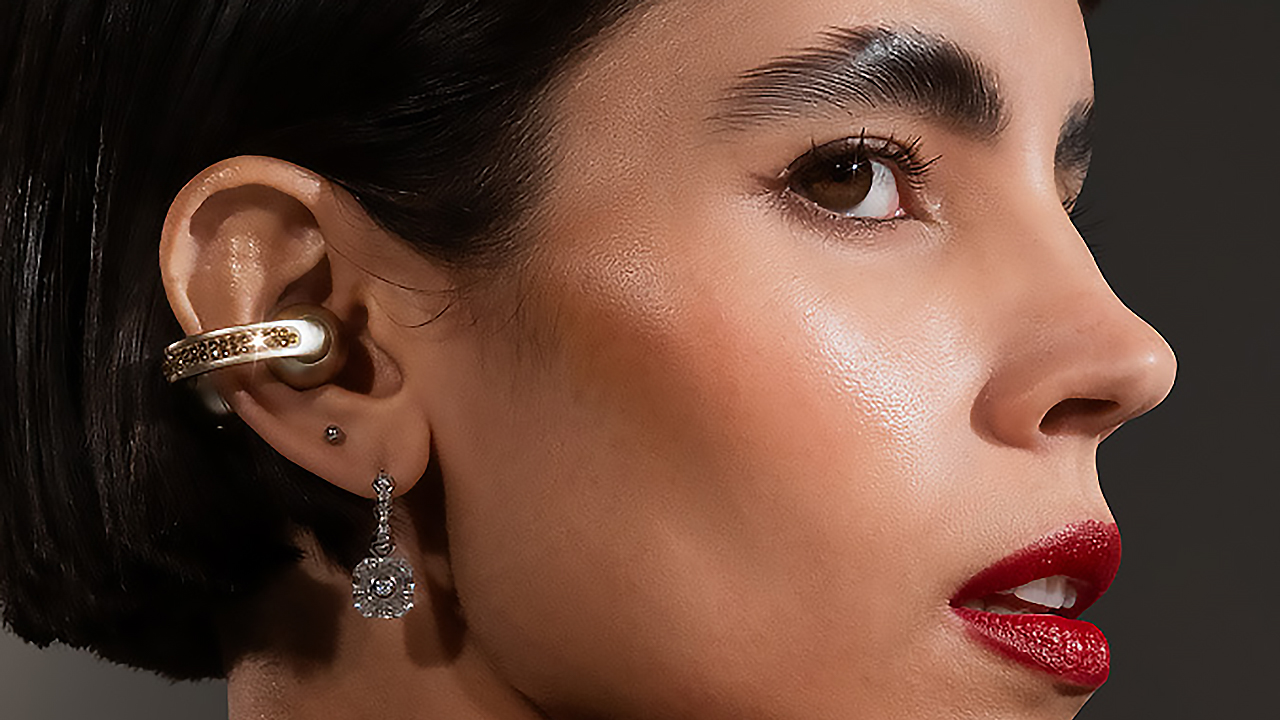 Motorola’s open earbuds could bring the bling and Bose sound
Motorola’s open earbuds could bring the bling and Bose soundMotorola is preparing to launch its first open earbuds and a new smartwatch too
By Carrie Marshall Published
-
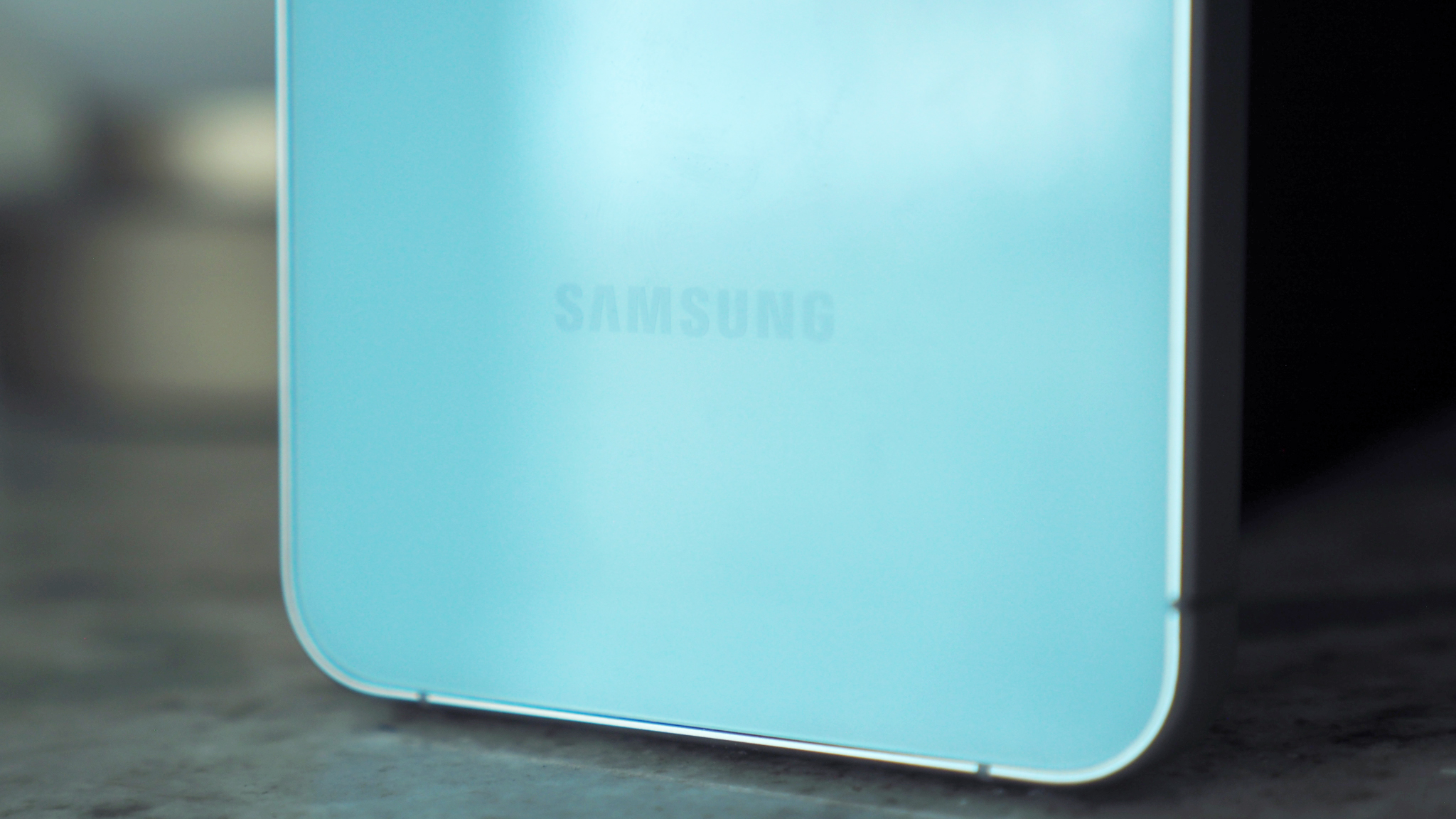 Samsung Galaxy S25 FE still on for this year, but one leak curbs our excitement
Samsung Galaxy S25 FE still on for this year, but one leak curbs our excitementThis is an odd choice
By Sam Cross Published
-
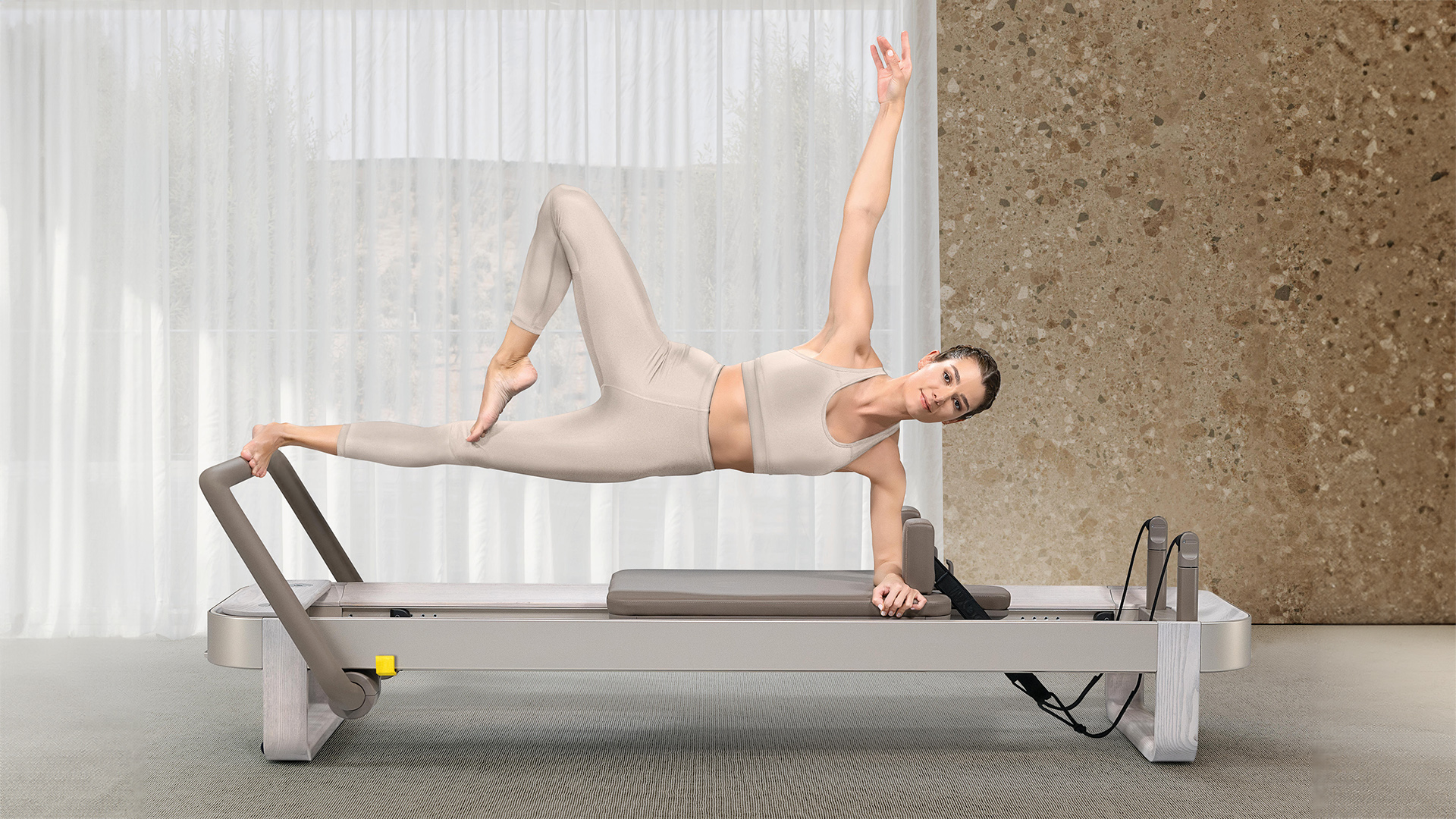 Technogym brings its signature touch of luxury to Pilates with latest home gym equipment launch
Technogym brings its signature touch of luxury to Pilates with latest home gym equipment launchThey've also introduced a new premium line of strength equipment and cardio kit
By Bryony Firth-Bernard Published